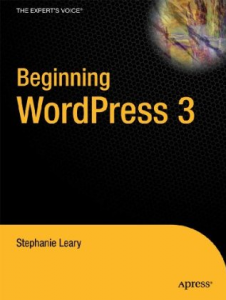Those of you who follow me on Twitter might recall that I had a ten-day encounter with the flu a few weeks ago. Usually when I have the flu, I take the opportunity to huddle under a blanket on the couch and binge on a TV series I haven’t seen yet. This time, I watched all of The Lizzie Bennet Diaries, a modern-day adaptation of Pride and Prejudice told in the form of short video blog posts.
It’s pretty brilliant. I’m not going to burble about the story — you can read about it elsewhere; there’s a huge community of fans on Tumblr. But catching up with it near the end, as I did, made me appreciate the logistics of a complicated transmedia serial, and I was constantly comparing it to the other brilliant serial I’ve been following, Shadow Unit.
This is going to get long.
The Lizzie Bennet Diaries were primarily a weekly series of video blog posts. In between episodes, the characters would chat in real time on Twitter (teasing the audience, without spoilers) about the events of the story. They’d also post photos of things happening off-screen on Tumblr. I caught up with things the week the last episode was posted, so I just caught the tail end of all this, but it was very well orchestrated.
The LBD site has a Story page that lists all the pieces of the transmedia puzzle in order: not only the diary episodes, but the past Twitter conversations in between (via Storify) and the Tumblr photos. This is what makes it possible to do what I did: lie in bed all day and click each link in succession to catch up on the story all at once. If you didn’t feel like following all the interstitial social media stuff, you could stick to the video page or the YouTube channel to watch the main story play out in the videos.
Take a look at the home page and the story page, and then let’s compare and contrast a little bit with Shadow Unit.
Shadow Unit is described by its creators as fan fiction for a show that never existed, a profiler crime series about supernatural stuff — a cross between Criminal Minds and The X-Files. It’s a written serial that apes TV script structure: five acts per episode, eight to ten episodes per season. There’s fan art of the actors, who don’t really exist, and some of the “DVD extras” (vignettes and outtakes posted between the full-length episodes) reference conversations between these imaginary actors about the equally imaginary filming of the episodes. The show even has a theme song.
The transmedia elements are the characters’ LiveJournals and Twitter accounts (which I can’t find an index for). During the first season’s week-long finale miniseries (which was amazing), you could follow the characters’ increasingly frantic comments on each others’ blog posts each day, and you’d be on the edge of your seat by the time the episode was posted that evening. It was glorious.
But Shadow Unit is hard for a new reader to love. If you didn’t pause and go look at the home page, do so now. Does it convey what I just told you about the structure of the story and the mechanics of following along? Did you get lost in the context-free excerpts?
I adore the story, and I recommend it to almost everyone, but I have to write this long introduction (like the one above) and provide direct links to some points deeper in the site. Unlike LBD, the Shadow Unit site doesn’t have a single page that collects all the threads of the story into a table of contents that new readers can use to orient themselves. Such a thing does exist — on the fan-edited wiki. The site itself has an episode list (out of date) for the main story, an introduction confusing called “Sanding the Oyster,” (what does that mean? It becomes clear when you read it, but it’s not obviously an orientation page) and a Getting Started page, which is terribly out of date. The very old news on the home page mentions some bootleg ebooks, but not the official ebooks that are now available. For that matter, the ebooks are mentioned nowhere on the site. Given that almost everyone to whom I’ve recommended Shadow Unit has said, “… but I’m tired of reading things on the web! Isn’t there an ebook format?” you’d think that the creators would want to, I dunno, mention their existence on the front page of the site. But no, they’re a well-kept secret unless you follow the forum. Which… why would you, unless you were already invested in the story?
Which brings us to the issue of the schedule, past and future.
Now, I completely understand that the authors’ scheduling issues got the better of them, and that the weekly schedule of the first season was unsustainable. That’s fine. At two months between episodes, though, it’s hard to remember where we left off. What happened last time? What were the dangling plot threads from the episodes before that? What’s been revealed in the DVD extras in between? Again, a single table of contents would be helpful here.
But the bigger problem for me, as an already-devoted follower, is the upcoming schedule. It doesn’t exist.
That is, it does, but not on a single, easy-to-reference page, and certainly not within shouting distance of the table of contents. “What’s the most recent one?” and “When’s the next one?” are questions that should be easy to answer when you’re trying to follow a web serial. Instead, each episode has a thread in the season’s forum. The first post in each thread contains the tentative air date. If that date changes, that post usually doesn’t get updated to reflect the new expected date; you have to follow the later replies in the thread to see what’s going on.
Now. There are some big, big differences between these projects that I should point out here. First of all, LBD had a budget and a staff. Minions are invaluable when it comes to things like updating schedules, Storifying and linking to Twitter conversations, and generally keeping up with website maintenance. I know exactly how laborious that stuff is. Shadow Unit is done in its authors’ spare time, which is usually nonexistent. They did pull together the old blog posts (with relevant comments) for the ebooks, though, so a lot of the necessary work on that front has been done.
Shadow Unit started in 2008, and thus predates LBD by a lot. Its creators didn’t have a lot of models to go on, just a few pre-Kickstarter serials like Sharon Lee and Steve Miller’s Fledgling in 2007. Catherynne Valente’s very successful serial The Girl Who Circumnavigated Fairyland In A Ship Of Her Own Making came a year later. While those authors had a social media presence, the characters did not. The transmedia aspects of Shadow Unit were more or less unprecedented, and no one really knew how to put it all together. Storify and Tumblr weren’t around yet. New tools are available now, and everyone’s learned a lot.
So the thing that frustrates me, ultimately, is that Shadow Unit’s creators haven’t taken advantage of their successors’ lessons to improve their original project. Shadow Unit is still going, although it’s close to wrapping up. It has all the pieces in place to be truly great. But too few people know about it, because it’s so hard for new readers to jump in and figure out what’s going on.
And that makes me sad.
If you want to give Shadow Unit a try, which you totally should, it all starts with “Breathe.” The first ebook collection, containing four episodes and interstitial blog posts, is free.




Great article, Stephanie. I was an early reader and evangelist for Shadow Unit, and for years I would use it as an example of the direction transmedia needed to go. A lot of those ideas went into the creation of The Lizzie Bennet Diaries.
Thank you, Jay! You do good work. I’m looking forward to Sanditon.